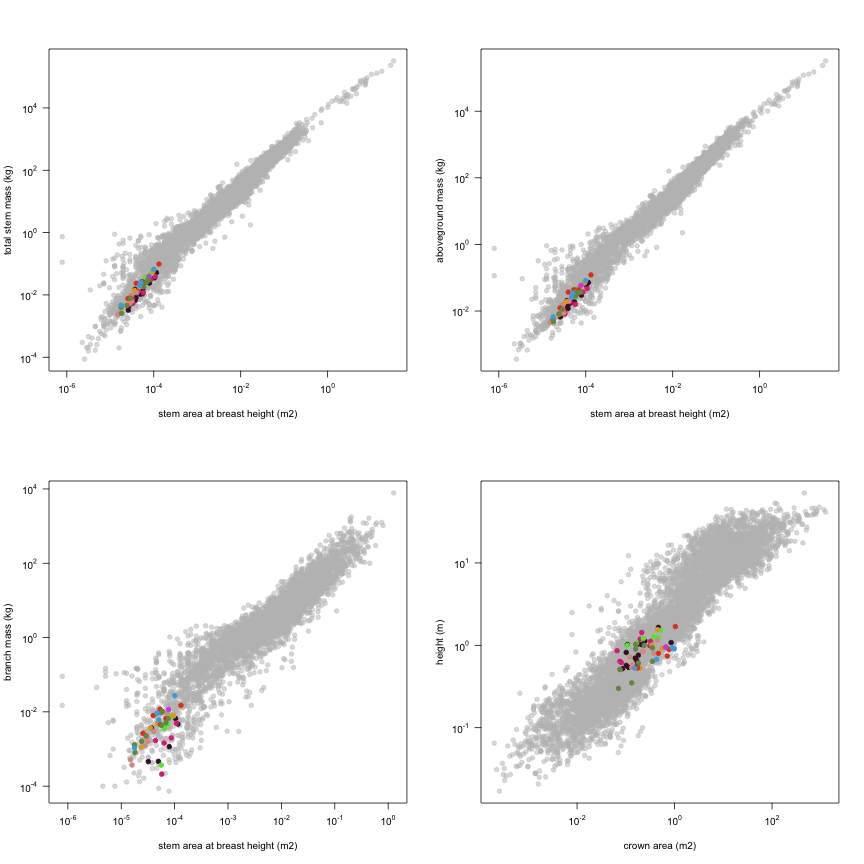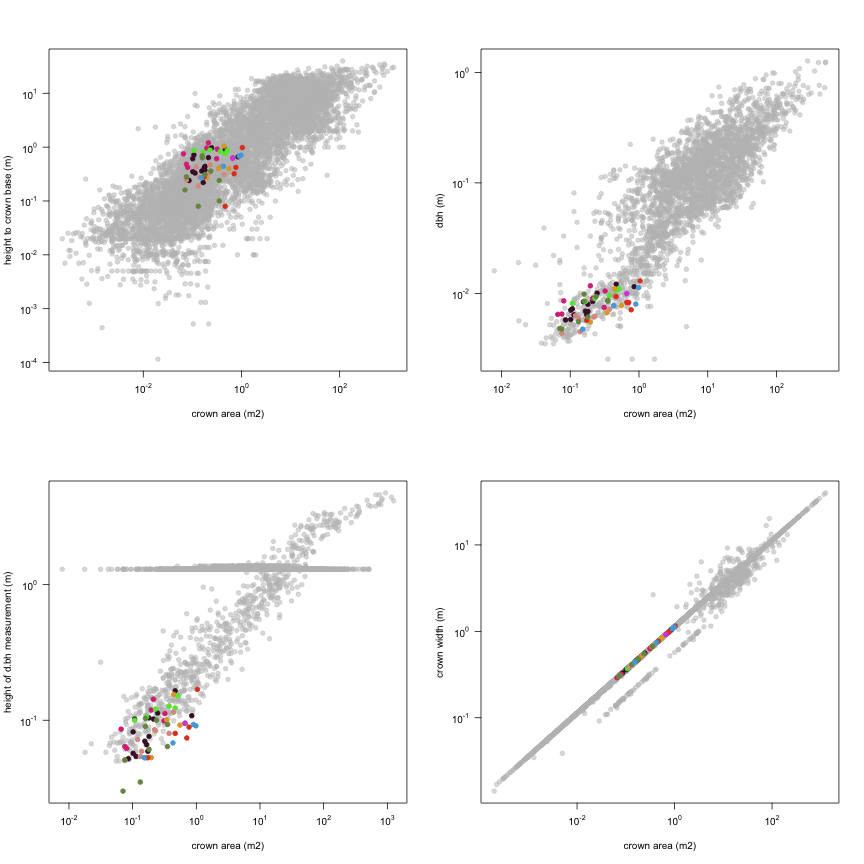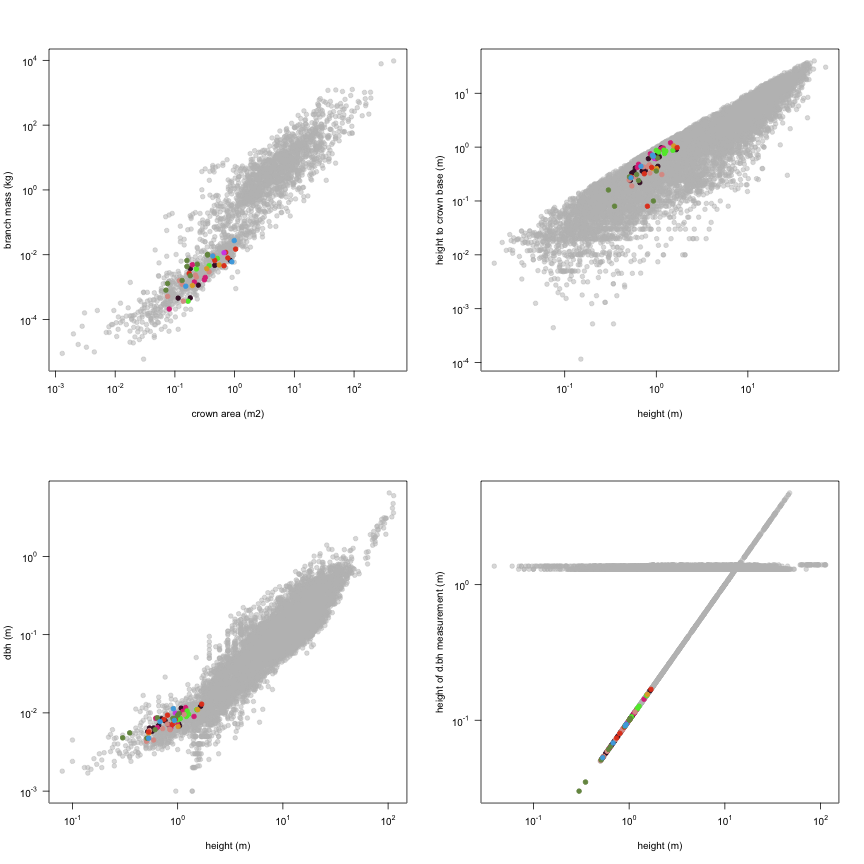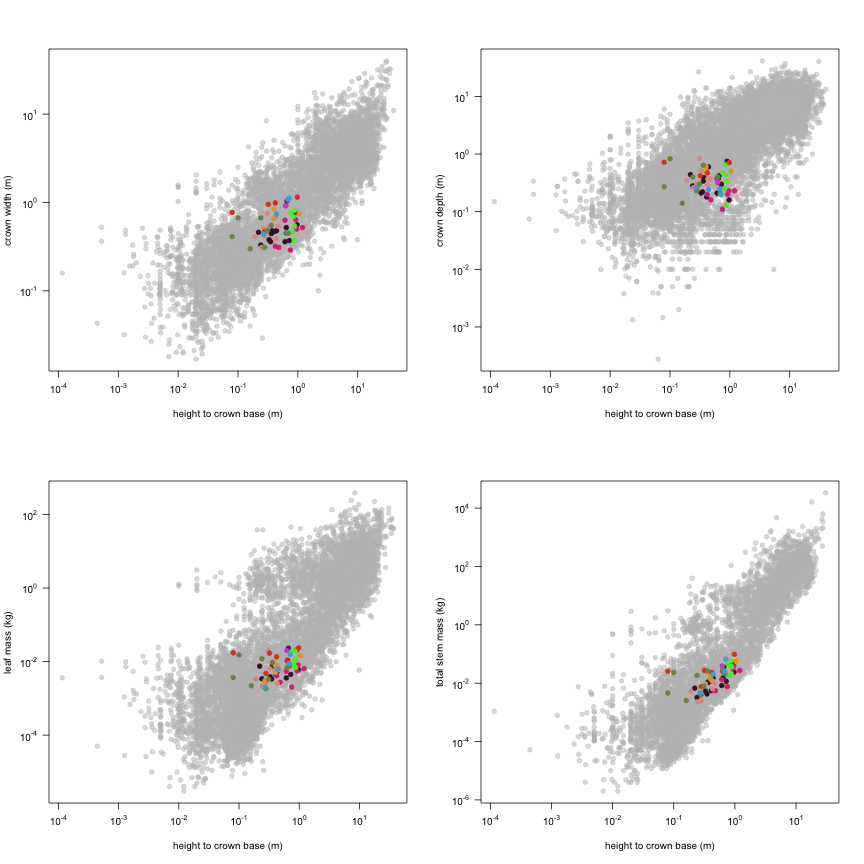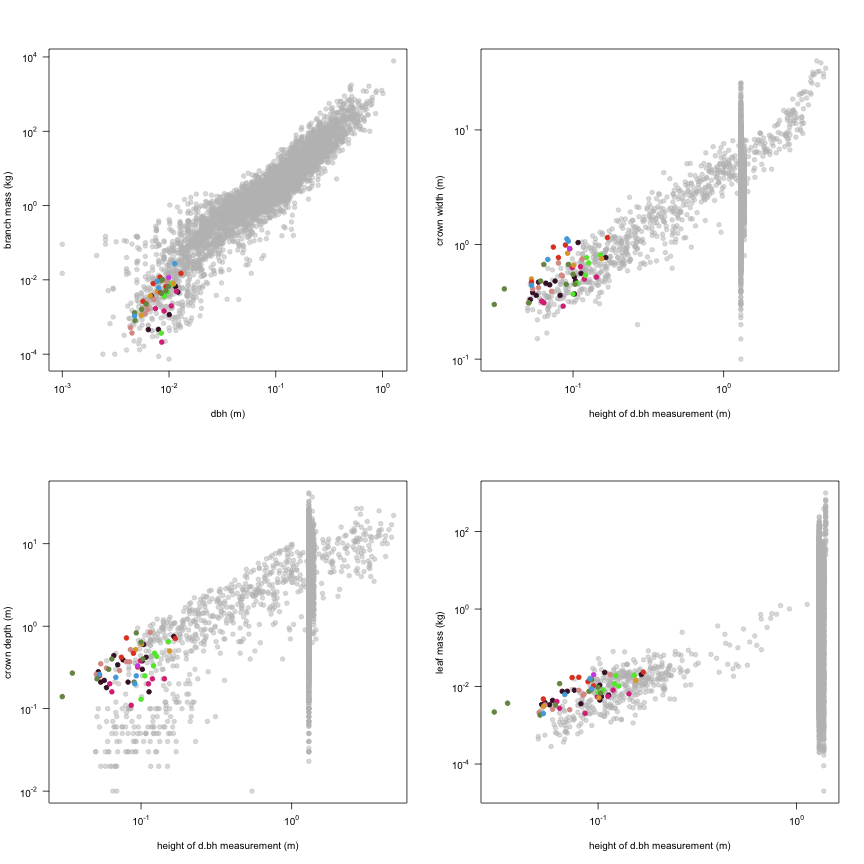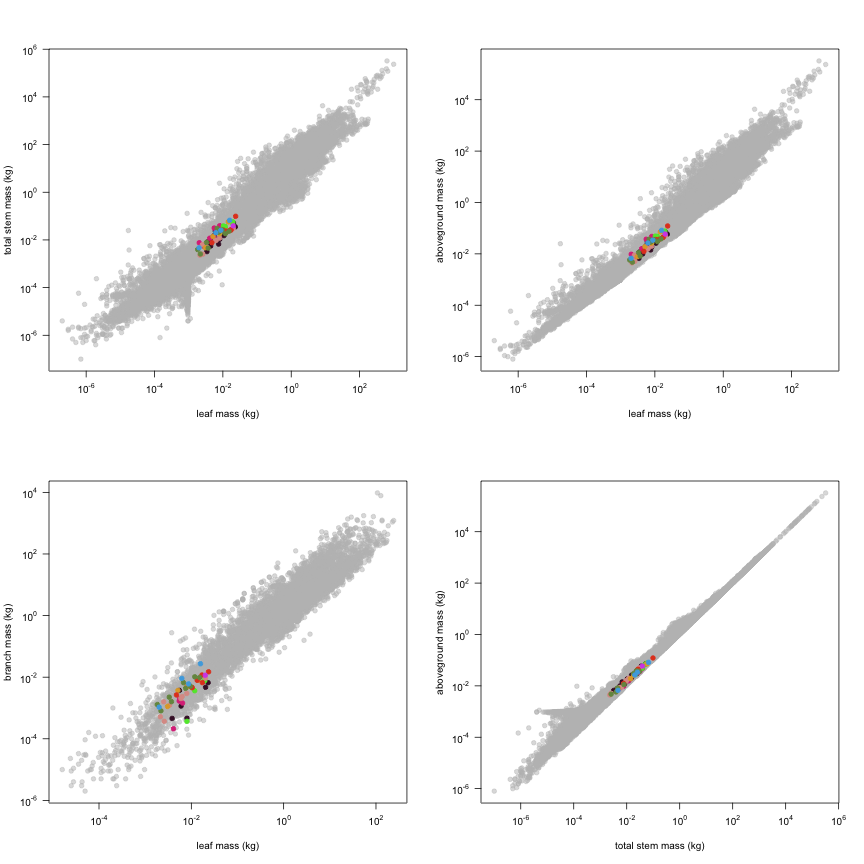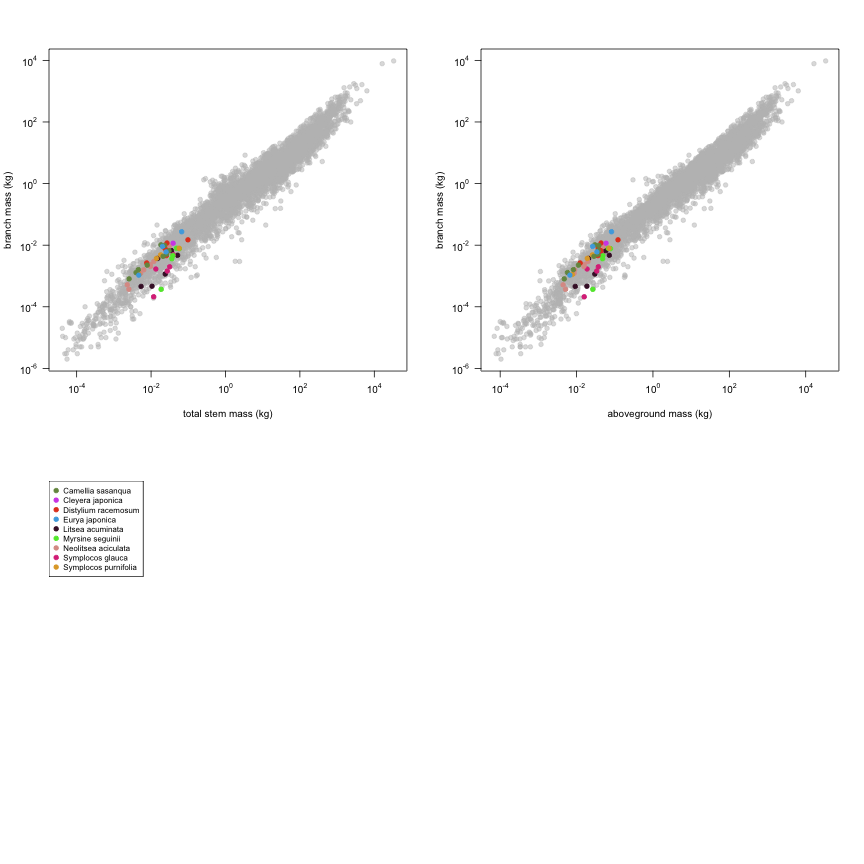-
Notifications
You must be signed in to change notification settings - Fork 19
Kohyama1987
Data contributor: Takashi Kohyama
Email: kohyama@ees.hokudai.ac.jp
Address:
- Faculty of Environmental Earth Science, Hokkaido University, Kita-ku, Sapporo 060-0810, Japan
Citation: Kohyama T (1987). 'Significance of architecture and allometry in saplings.' Functional Ecology, 1(4), pp. 399-404.
DOI: 10.2307/2389797
Abstract: Species differences in branching architecture and allometry were analysed for co-occurring forest floor saplings of 10 species of shade-tolerant evergreen broad-leaved tree, representative of primary warm-temperate rain forests in southern Japan, from the viewpoints of assimilative efficiency and significance for regeneration. Considerable diversity was found in the architecture of branching and in the leaf size of saplings. The differences in branching and leaf size were related to differences in allometric relationships between various properties of the saplings. It was hypothesized that this architectural and allometric diversity is related to the alternative of `choosing' either the pattern of assimilate allocation, which is adaptive in competition when there is an early improvement in light conditions, or the allocation pattern which is favourable for surviving long periods under persistently dark conditions. Measurements of sapling growth in closed stands and in gaps supported the hypothesis.
The dataset includes records for 59 individuals from 9 species belonging to 5 family(ies), presenting 1 functional type(s), growing in 1 condition(s) within 1 major type(s) of habitat, with data included for the following variables:
| Variable | Label | Units | N | Min | Median | Max |
|---|---|---|---|---|---|---|
| latitude | Latitude | deg | 59 | 30 | 30 | 30 |
| longitude | Longitude | deg | 59 | 130 | 130 | 130 |
| a.lf | Leaf area | m2 | 59 | 0.026 | 0.086 | 0.35 |
| a.stbh | Stem area at breast height | m2 | 59 | 0.000015 | 0.00005 | 0.00013 |
| a.cp | Crown area | m2 | 59 | 0.066 | 0.21 | 1 |
| h.t | Height | m | 59 | 0.3 | 0.89 | 1.7 |
| h.c | Height to crown base | m | 59 | 0.08 | 0.43 | 1.2 |
| d.bh | Dbh | m | 59 | 0.0043 | 0.008 | 0.013 |
| h.bh | Height of d.bh measurement | m | 59 | 0.03 | 0.089 | 0.17 |
| d.cr | Crown width | m | 59 | 0.29 | 0.52 | 1.1 |
| c.d | Crown depth | m | 59 | 0.11 | 0.32 | 0.84 |
| m.lf | Leaf mass | kg | 59 | 0.0018 | 0.0068 | 0.024 |
| m.st | Total stem mass | kg | 59 | 0.0023 | 0.015 | 0.098 |
| m.so | Aboveground mass | kg | 59 | 0.0044 | 0.026 | 0.12 |
| m.br | Branch mass | kg | 59 | 0 | 0.0022 | 0.027 |
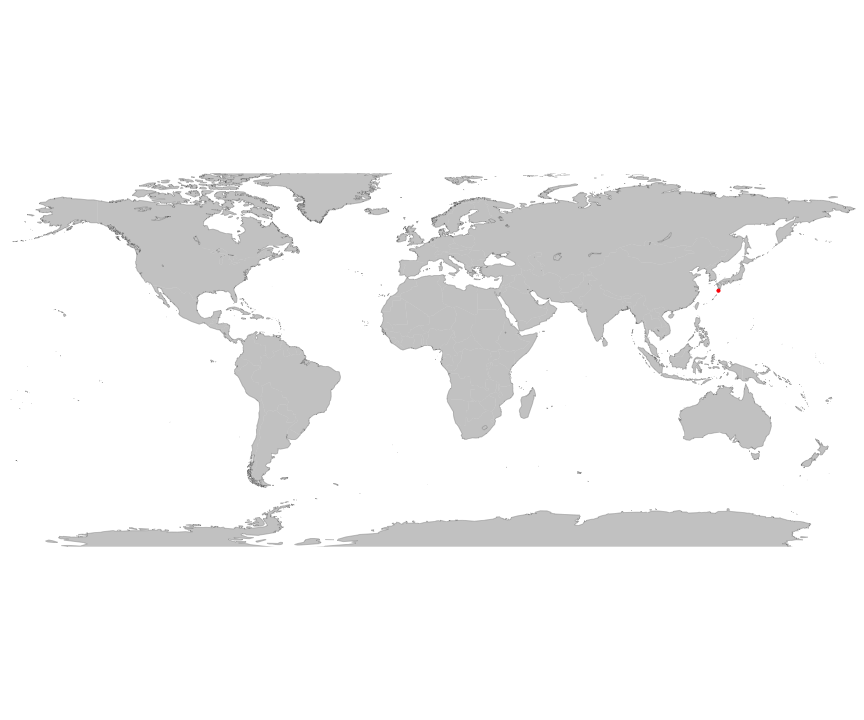
And locally within the country:
## Error - location lies outside country borders. Perhaps add more decimal places?
The sites sampled are:
| Location | Longitude | Latitude | Vegetation |
|---|---|---|---|
| Ohkou River, Yakushima Island, Kyushu, Japan | 130.4333 | 30.31667 | Temperate rainforest |
The growing conditions of sampled plants was:
| Location | growingCondition |
|---|---|
| Ohkou River, Yakushima Island, Kyushu, Japan | field wild |
| Species | Family | Pft |
|---|---|---|
| Litsea acuminata | Lauraceae | evergreen angiosperm |
| Symplocos glauca | Symplocaceae | evergreen angiosperm |
| Myrsine seguinii | Myrsinaceae | evergreen angiosperm |
| Neolitsea aciculata | Lauraceae | evergreen angiosperm |
| Symplocos purnifolia | Symplocaceae | evergreen angiosperm |
| Distylium racemosum | Hamamelidaceae | evergreen angiosperm |
| Cleyera japonica | Theaceae | evergreen angiosperm |
| Camellia sasanqua | Theaceae | evergreen angiosperm |
| Eurya japonica | Theaceae | evergreen angiosperm |
Sampling strategy: Abundant/representing species with high sapling(seedling) density under closed canopy were selected, based on the permanent plot censuses in primary forest. Chosen individuals were apparently seed origin and without obvious sign of past stem breakage.
Leaf area: The outline of the entire leaf(let)-brade (excluding petiole/rachis) was traced by thin tracing paper. The traced leaf brades were cut, weighed, and converted to area from unit-area weight of used paper.
Stem cross sectional area: Two perpendicular diameters were measured for the main stem at 1/10 of top height using a calliper, and cross-section area was obtained as that of ellipsoid with two diameters.
Height: the vertical distance from the base on soil surface to the highest leaf, measured by a pole or a convex steal measure tape.
Crown area: Two horizontal widths of crowns were obtained with a convex steel measure tape. The maximum width was obtained first, and the other was the maximum one along the perpendicular angle to the first one. Crown projection area was calculated from these two widths as an ellipsoid area.
Biomass: Entire samples were put into electric oven at 80degC over a couple of days to yield oven-dry weight, measured with an electric balance.
Growth environment: All samples were from fully closed-canopy stands, or they were not grown under canopy gaps. Primary warm-temperate rain forest.
Year collected: 1983
This is how the study Kohyama1987 fits in the entire dataset (grey). each colour represents a species. A legend of species names with colours is included at the end for reports with 1 < n < 20 species.





